Ok - so I've had a play with a couple of recent 10 shot targets. Hopefully completed the spreadsheet correctly - had to extend graph axis limits to fit. Targets were 200m at local range (197 according to my RF). In MOA-speak, targets measured at around 1.4 and 1 moa respectively. All the usual excuses apply (wind, mirage, dodgy rest...coriolis effect), however I guess it still gives a somewhat representative picture of the accuracy of my 'system'.
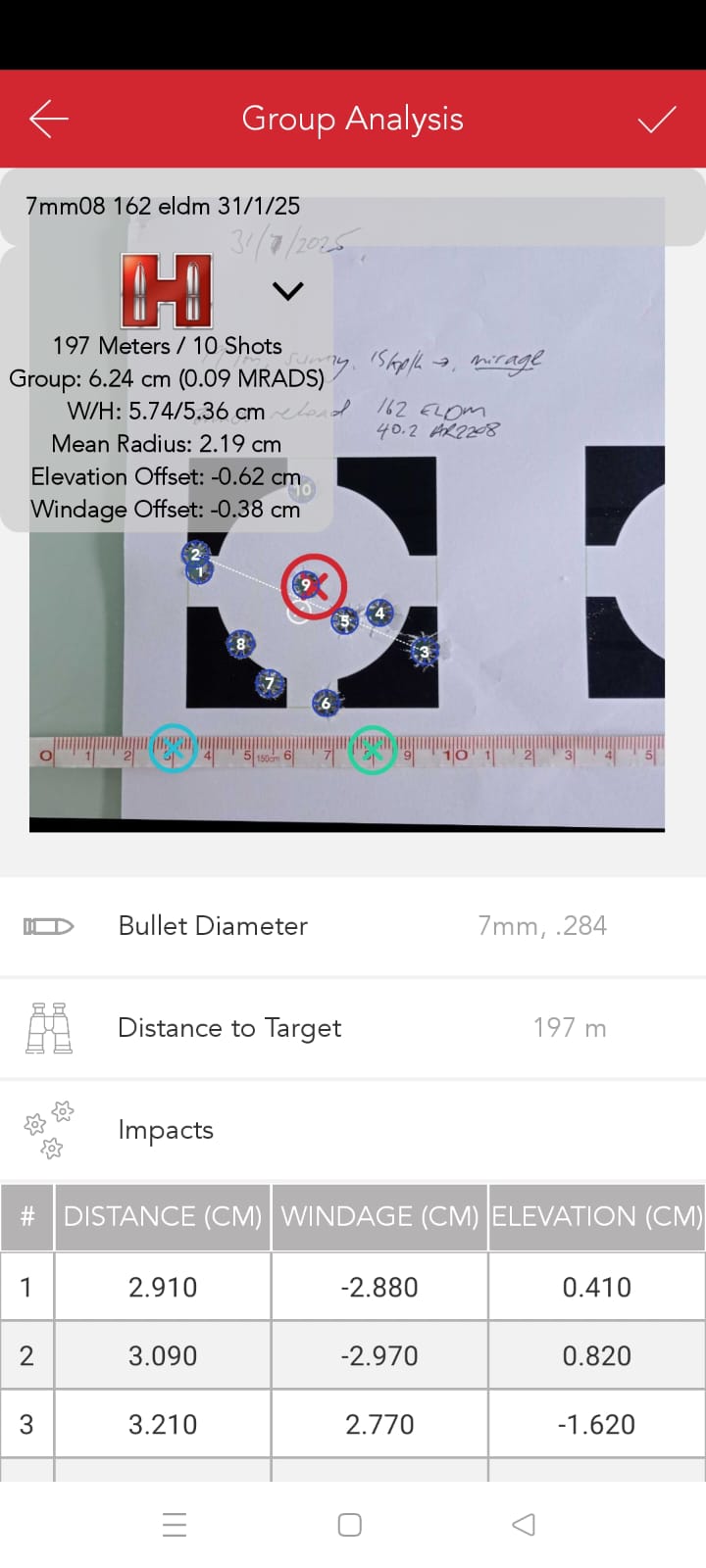
Welcome guest, is this your first visit? Create Account now to join.
Welcome to the NZ Hunting and Shooting Forums.
Search Forums
User Tag List
+ Reply to Thread
Results 16 to 30 of 102
-
04-02-2025, 05:24 PM #16Member

- Join Date
- Dec 2024
- Location
- Manawatu
- Posts
- 104
-
-
04-02-2025, 05:51 PM #17
That's excellent precision and accuracy both. What is your system?
Looks like the x axis for the scatterplot maybe needs to go to 4.5
A mean radius of around 0.105 MRAD is very good from what I've seen.
-
04-02-2025, 06:16 PM #18
Doing the maths, you have around about a 1.5MOA system in the old money, taking the definition of "what is the true cone of fire". Very good.
-
04-02-2025, 06:28 PM #19Member

- Join Date
- Nov 2012
- Location
- NI
- Posts
- 1,757
Found the time to put in the data and had gimp take a look and interpret it. Very interesting.
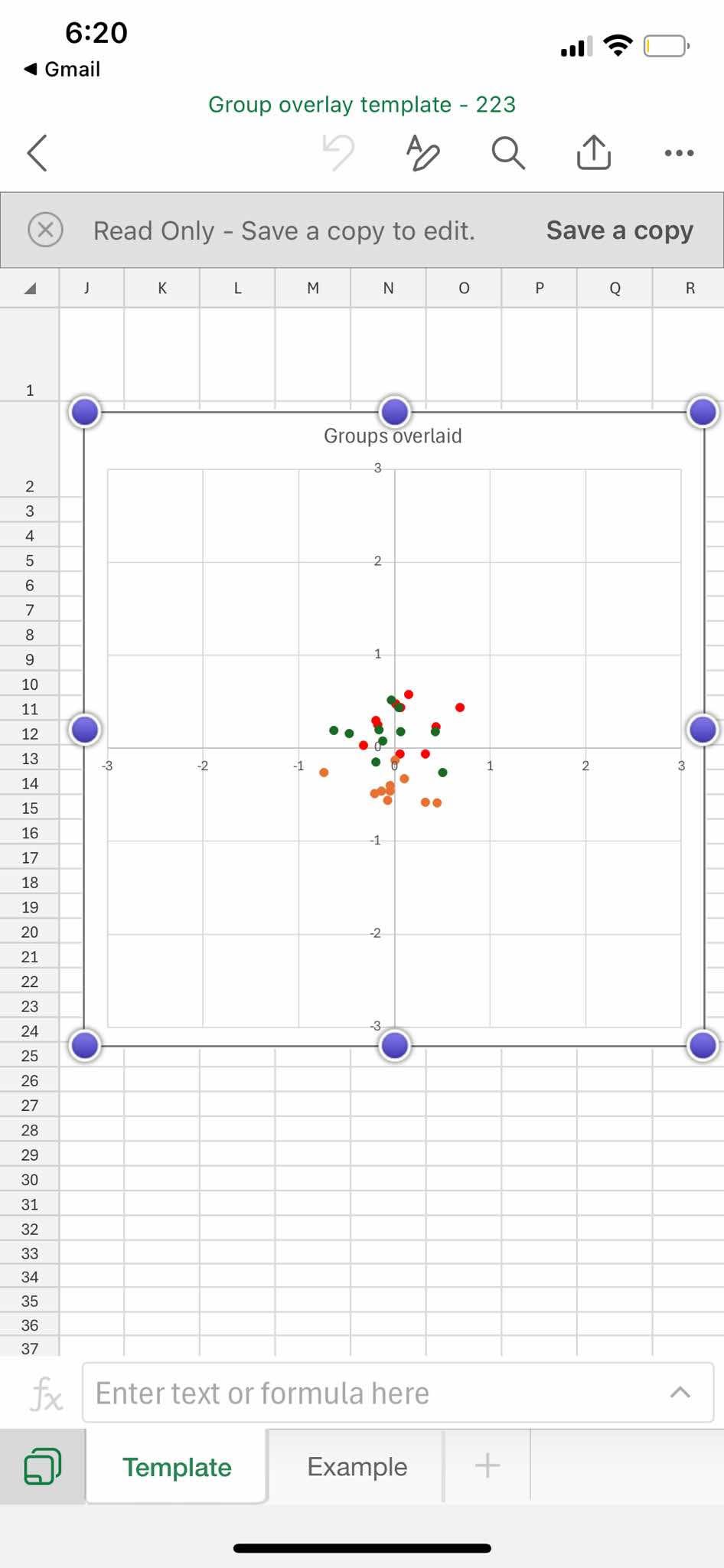
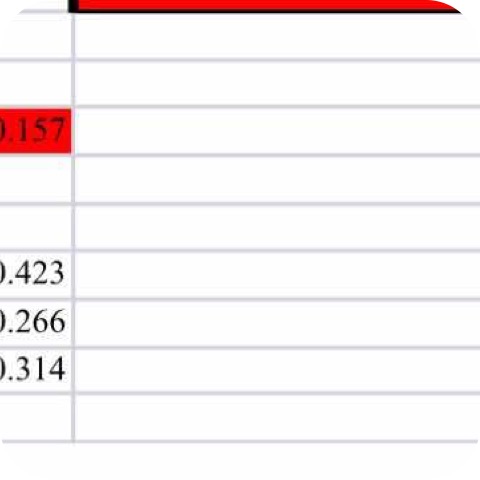
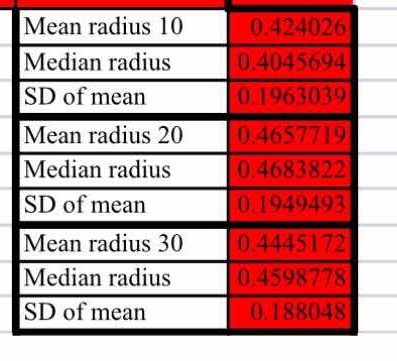
It looks like you're working in inches, and the extreme spread of your observed 30rd group is around 1.9 inches (1.8MOA). Using the mean radius multiplied by 4.16 method, the predicted extreme spread is about 1.85 inches - the median radius method gives a predicted 1.91 group which matches your observed results - this is what we'd expect, as 30 rounds generally gives you a good idea of the "true" extreme spread.
I haven't worked out a good way to measure the extreme spread of overlaid groups in the spreadsheet yet, aside from visually picking the 2 farthest apart points on the scatter plot and doing some quick trigonometry on those.
The advantage of mean radius of course is that it's a more efficient statistic than extreme spread so you can get a pretty good idea of the predicted true extreme spread from a 10 round sample rather than 30 - the mean radius of your first 10 round group is .42 (0.44 from all 30, very close to the true value), so you get a predicted group size of 1.74 inches - reasonably informative. Of course there's a bit of error in using 10rd numbers still, it is a small sample for statistics.
What this means is that you have -
a 1.1 MOA rifle if you take the definition that the precision of your rifle is the average size of your 3x 10 round groups
a 1.0 MOA rifle if you take the definition that the precision of the rifle is the size of the best 10rd group
a 1.2 MOA rifle if you take the definition that the precision of the rifle is the size of the worst 10rd group
a 1.8 MOA rifle if you take the definition that the precision of the rifle is the size of target that you can confidently expect to hit with it based on system (rifle/ammo/shooter) dispersion.
I of course select the 4th definition as it's the most "true" - but you can see the difference between reality and many reported results on the internet - imagine if we were working based on 3 round groups for the individual group size averages, how different the "true" precision would be.
You look pretty well zeroed - the mean POI of all 30 shots is centred about half of a .25MOA click (assuming you're using a MOA based scope) from your POA - .13 inches left, 0.16 inches high - you could come down 1 click and expect that your zero is now .1 inches low rather than 0.15 high .
The group formed by the 30 rounds is nice and regular and round, and what you'd expect to be really representative of the true precision of the system - the fact that group 2 largely falls slighly lower than the other 2 groups is a matter of chance in the random variation you get in groups.
This is really good precision for a factory rifle setup I think - the Tikka T3 is often considered a very precise factory rifle. The average I've seen from multiple Tikkas shooting 10rd groups with factory ammo is around 1.9MOA extreme spread - and the average predicted true precision of those rifles using the mean radius method is around 2.5MOA.
You now have a really good zero and a good measure of your true precision - which is entirely sufficient for general hunting purposes in my view. Making some assumptions, you have 100% hit probability on a 200mm dia circle out to around 300-350 metres. Whether you wish to pursue better precision depends on your intended use I suppose ? If you're shooting something like a 55gr bullet, the effects of wind are a bigger problem for your hit probability than precision.
If you wish to obtain better precision, you'd probably be looking to try a different bullet or powder (or make modifications to the rifle e.g. bedding) and look for an improvement in the mean radius of say, at least .1 inches to .35inch mean radius or thereabouts - you should be able to detect that with a 10 round group with some confidence. That's something like a 25% improvement and should result in about "a 1.4MOA precision" by the 4th definition and gives you high 90's % hit probability out to 450-500m based on dispersion - although again bullet choice for wind resistance will have more useful effect.
Any improvement of less than 0.1 inch mean radius you can't really have any confidence in, unless you shoot 20-30 rounds of the new load
-
04-02-2025, 06:36 PM #20
-
04-02-2025, 06:37 PM #21Member

- Join Date
- Dec 2024
- Location
- Manawatu
- Posts
- 104
-
04-02-2025, 06:38 PM #22Member

- Join Date
- Dec 2024
- Location
- Manawatu
- Posts
- 104
-
04-02-2025, 06:44 PM #23
Mean radius is 2.14cm at 200m, so 1.07 at 100m. Multiply by 4.16 to get your predicted Ø95 (diameter into which 95% of shots can be predicted to fall). 44.5mm at 100m. Multiply by .91 to convert to yards. 40.5mm. 1.59 inches. Divide by 1.047 to convert to MOA. 1.52. Round it, because it's insane to think about going beyond 1 decimal place talking about this stuff.
-
04-02-2025, 06:45 PM #24
.91 to convert angular measure at 100m to 100 yards, to be clear
-
04-02-2025, 06:48 PM #25
We really should just start thinking about precision in mean radius, measured in MRAD. 0.05 is exceptional. 0.075 is great. 0.1 is really good. 0.15 is fine. 0.2 is just acceptable for hunting. 0.25 is pretty average.
-
04-02-2025, 06:58 PM #26Member

- Join Date
- Nov 2012
- Location
- NI
- Posts
- 1,757
I just did this load for some varmint destruction at 3500 fps. By the looks should be fine out to 300 which is pretty much the max I need to shoot where I hunt.
I have some Sierra 65gr GK but I need to load up a few more. I’ll do another test and come back again with the data.
I’d be keen to do the 300wsm but the cost is up there and reasonably hard on the body, and after seeing a lot of your posts on Tikkas and the fact I stick to 400 yard maximum, probably not much point. Maybe I’ll whack 10 shots into the 400 yard gong and see what’s happening.
-
04-02-2025, 07:17 PM #27
The cool thing about using these metrics is that a 10rd group at 100m will give you a good MPOI to adjust from, with some variation in that depending on the precision of the rifle - a .2MRAD MR rifle will probably need more than 10rd to get a really solid zero - and a "close enough" mean radius number to understand your true precision. No need to fire 30.
Note that a Tikka with a bullet/brass it likes will shoot very well.
-
04-02-2025, 07:27 PM #28Member

- Join Date
- Dec 2024
- Location
- Manawatu
- Posts
- 104
Interesting - so a 95%CI for ES derived from mean radius?
On a related note -what would I practically need to do to determine a load was "better"? I don't really have any need to play with the load, but sometimes wonder how many rounds I'd actually need to validate any change.
-
04-02-2025, 07:32 PM #29
The sample size required to have the power to detect whether a load is "better" confidently depends on how much better. If you're trying to detect a 10% improvement, you'd need a very large sample size. 300 rounds? A 25-50% improvement should be visible with 10-20 shots. I'd recommend doing your testing at 100m to remove the variable of wind as much as possible, you'll note your 20rd group is slightly wider than tall - maybe wind, maybe recoil, maybe trigger control, maybe random chance.
It is more sensible to identify your requirements first - then simply select a load that meets those and move on.
-
04-02-2025, 07:37 PM #30
I've been threatening to make a thread on Hit Probability for a while, maybe I'll actually get around to it. It's the key thing we're really looking for.
It's really high with almost anything at "conventional hunting" ranges, which is why most people have got away with doing all kinds of random shit most of the time
Similar Threads
-
Cause of split groups?
By samohtxotom in forum ShootingReplies: 19Last Post: 14-03-2024, 03:16 PM -
Model 60 22 Groups
By SeftonB in forum ShootingReplies: 8Last Post: 24-09-2022, 10:21 PM -
Block groups FWF
By Cowboy in forum HuntingReplies: 17Last Post: 24-07-2021, 11:10 PM -
big groups
By buzzman in forum Reloading and BallisticsReplies: 16Last Post: 23-06-2013, 07:35 PM
Tags for this Thread
Welcome to NZ Hunting and Shooting Forums! We see you're new here, or arn't logged in. Create an account, and Login for full access including our FREE BUY and SELL section Register NOW!!





 41Likes
41Likes LinkBack URL
LinkBack URL About LinkBacks
About LinkBacks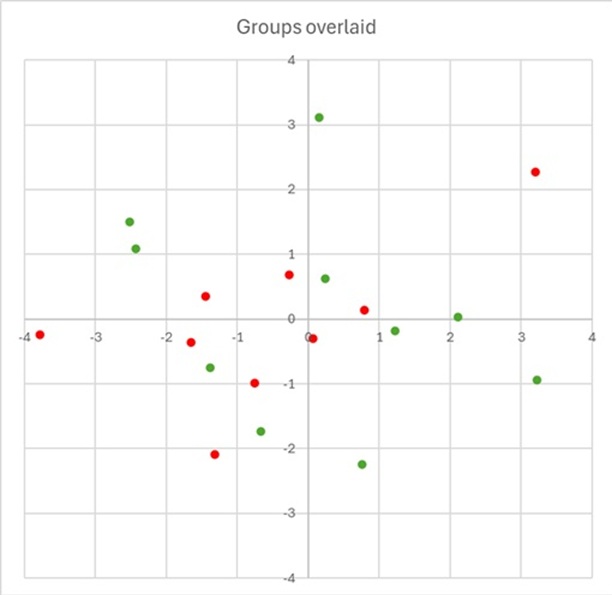

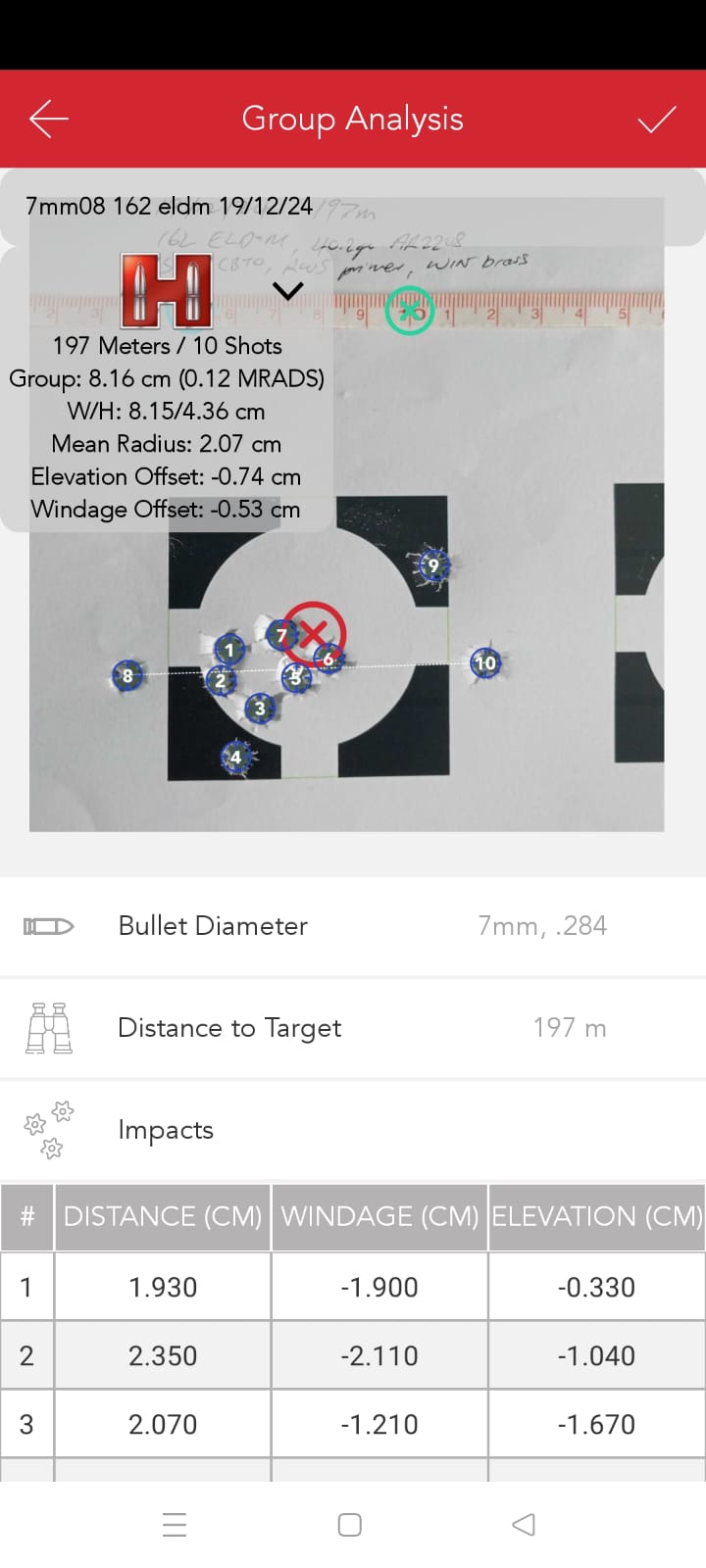




 Reply With Quote
Reply With Quote



Bookmarks